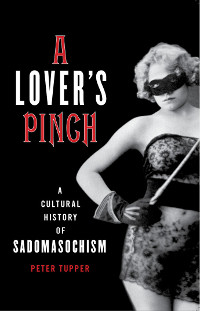We open with more vanilla sex. There must be a layer of dust in the Red Room of Pain by now.
Here we find out that Mrs. Robinson’s real name is Elena Lincoln (is that American enough?).
We could go into a debate over the ethics and morality of a sexual/BDSM relationship between an adolescent male and an adult woman, whether it is intrinsically exploitative, whether we would feel different if the genders were reversed, and so on. That’s outside the purview of this blog. I will say that Ana’s feelings regarding this other woman aren’t driven by anything like that. They come from jealousy, pure and simple.
There’s a fair bit of action in this chapter, but not much to actually advance the plot. Also, EL James’ idea of witty, flirty banter wouldn’t pass in a CW teen soap.
- Brian: What are you playing?
- Tim: Tomb Raider 3.
- Brian: She’s drowning.
- Tim: Yeah.
- Brian: Is that the point of the game?
- Tim: Depends what mood you’re in really.
- Brian: What sort of mood are you in then?
- Tim: Well, I got a letter from my ex-girlfriend this morning, 3 months too late, explaining why she dumped me. It was full of ‘you’ll always be special’ and ‘I’ll always love you’ platitudes designed to make me feel better whilst simultaneously appeasing her deep seated sense of guilt for dumping me, running off with a slimy little city boy called Duane and destroying my faith in everything which is good and pure.
- Brian: So it didn’t really work then.
- Tim: No, it made me wanna drown things!
- Spaced, episode “Battles”, series 1, episode 4
Videogames are a relatively new art form, but they are as deserving of discussion as any other. Likewise, videogames do say things about sexuality and gender, and in extreme cases this revolves around rape. Recently, the owners of the Tomb Raider franchise set off controversy when they said they would include a sexual assault in heroine Lara Croft’s background.Things get even dicier when you factor in the interactive nature of videogames, and giving players the opportunity to put their characters in sexual relationships, sometimes non-consensual ones.
Clarisse Thorn and Julian Dibbell have edited and published an anthology (ebook and print) about this thorny area, titled Violation: Rape in Gaming.
Fitzgerald, William. Slavery and the Roman Literary Imagination. Cambridge University Press, 2000.
Initially I assumed that classical slavery had very little to do with Atlantic slavery, but subsequent research has suggested that the legacy of Roman and Greek ideas about slavery did inform both period thinking about Atlantic slavery and our modern fantasies about it.
Roman slavery was a very different institution than American slavery. Slaves were ethnically and culturally diverse, and did everything from the most skilled to the least skilled jobs. Slaves could be manumitted, becoming freedmen, and their children were born as citizens. Everybody regarded slavery as a fact of life, and there was no abolitionist movement.
This chapter introduces two nemeses to the story: Leila, Christian’s deranged former submissive, and Jack Hyde, Ana’s new creepy boss. Instead of resolving the problems of the Ana-Christian relationship, the narrative shifts to dealing with external threats. It’s probably not coincidence that Jack and Leila function as dark doubles of Christian and Ana: there’s a kind of dream-splitting at work in this story, with the bad elements of a figure separated and projected onto another figure by the dreamer or fantasizer.
Christian does call Ana on her childish attempt to make him jealous, all the while dragging her into a restaurant and ordering a full meal for her, plus haranguing the server. (This guy deserves the Tyler Durden special sauce on his order.)
In the first book of the Fifty Shades trilogy, an emotionally damaged one-percenter attempted to coerce a college graduate into an abusive relationship (which she had no understanding of or desire for) through a combination of seduction, bribes, deception, stalking and emotional blackmail. She finally realized that she was neither submissive nor masochistic, returned his gifts, and left him. The end.
Hopefully Anatasia Steele would have realized there are other men in the world, that there are other options than a false choice between slut and old maid, and perhaps she might even experimented with BDSM with some other person who is not so deranged and compulsive.
Except it wasn’t the end.
Brooten, Bernadette J., ed. Beyond Slavery: Overcoming Its Religious and Sexual Legacies. Palgrave MacMillan, 2010.
Although Jewish, Christian, and Muslim religious leaders have always recognized the difference between slavery and marriage between men and women, they have sometimes applied concepts from slavery to marriage.
Pg. 8, “Introduction” by Bernadette J. Brooten
Clissold, Stephen. The Barbary Slaves. Elek Books, 1977 Gbooks
Up until now, I had focused most of my attention on Atlantic slavery as an source for BDSM fantasies, but there are other influences that go back centuries. The older some historical event is, the more it has decayed into myth. It underlies more recent events. Abolitionists used Orientalist and Gothic ideas to talk about American slavery and in doing so harkened back centuries to Barbary Coast slavery, when Christians were enslaved by Muslims in North Africa and the Middle East. It was a roughly two-century period marked by Christian Europe’s relative rise as a world power and Muslim Northern Africa’s relative decline.

